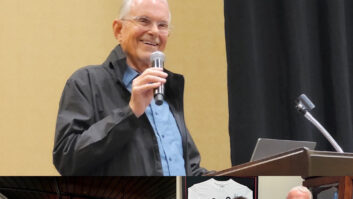Palo Alto, Calif. — During a day-long tour of HP Labs, the company’s primary research and development facility, Hewlett-Packard’s engineers and product managers gave TWICE some insight into what the company has in store for consumers in the coming years.
With digital cameras fast becoming a commodity product, HP is focusing its efforts on improving the surrounding aspects of digital photography, said Dan Tretter, project manager, imaging technology department.
“I see less improvement on the image quality coming out of the devices. We’ve now reached a point where everyone’s product is OK. Now we have to work on the quality of the experience,” he said.
Part of HP’s effort to break out of the imaging pack includes building intelligence into the photo process to help people sort through the huge numbers of images they compile. Much of the company’s work entails tagging the images with metadata so software programs can easily organize and optimize the images. This lets the software can determine if an image is worth keeping, and it could let a computer automatically put together a quality slide show or photo album. One application created slide shows with several images appearing at once. The software was able to overlay the images by determining which section of the photo was uninteresting, say the sky in a photo of a person, and it would place the secondary or tertiary image in that space.
Continuing research on HP’s Digital Entertainment Center PCs includes adding the ability to pull content into the device, instead of depending strictly upon the push system now used by programming providers, and building better two-way communication between the providers and users into the PCs. Since a large portion of enabling this system is not an R&D problem, the company is working outside of HP Labs with the movie and television industries to allow HP devices to bring in to homes specific types of content.
While these projects are likely to see the light of day in the near future, HP Labs also showed several works-in-progress.
Currently undergoing a beta test in a pub in the UK is a PC built into a coffee table. The touch-screen display is the tabletop with the PC mounted underneath. The HP engineers are still trying to figure out its potential uses, but so far they envision people playing electronic board games, kids using art programs to “draw” on the LCD, or using it as a standard computer.
Another venture is called HP Minders. These are small pill-sized devices are placed around a home or on specific items and communicate with a wristwatch style device to help a person with a variety of day to day tasks. The devices, which use ultrawideband networking, can keep track of a person’s movements, essentially building a living journal of your day. The information is displayed on the watch or home computer. HP sees this as a viral technology so a person could expand his tracking capabilities as the small locators are added by other people and businesses.
Somewhat further along is an electronic book that shows not just the text, but the full outline of an opened book with turning pages.













